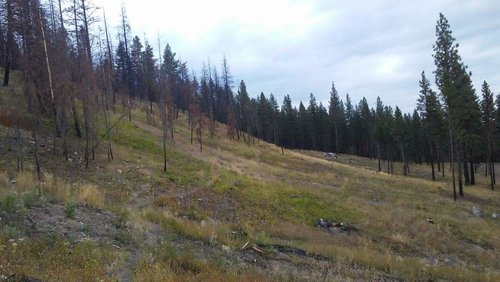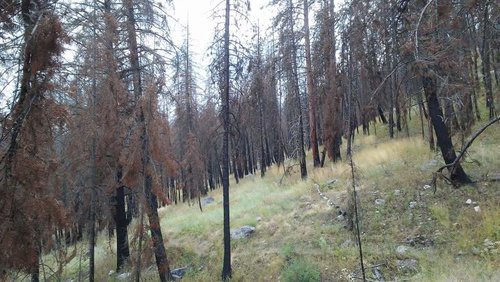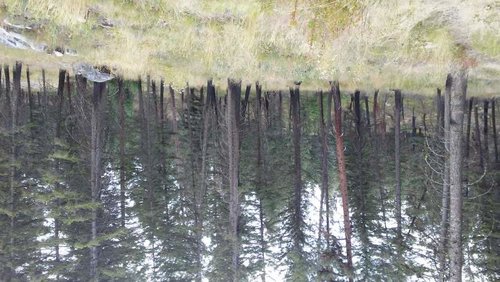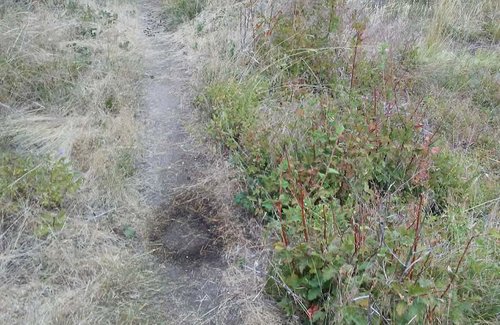jumpshooter
Member
- Joined
- Aug 11, 2015
- Messages
- 42
BuzzH,
You are missing a few things here. While Colorado, Wy, ID, MT and Utah may have low income generating lodgpole, other states have much more to offer and the great thing about federal timber sales is they all go in the same pot. Each Region can share in the profits and spread out the losses. Just use California for an example, we are talking about thinning 20 million acres. These forests are significantly over stocked with 200 to 500 trees per acre. Prior to the exclusion of fire, there were probably 50 to 100 trees per acre. Most of these stands are 40 to 60 years old or more at this point. The average diameter tree is going to be 20" dbh or more. That is 200 board feet. If you are thinning even say 100 trees per acre out of the 500, you are talking about 20,000 board feet per acre. I went through the stumpage values in a previous note, so lets just do this simple and say $200/1,000 bd ft. stumpage (logging and trucking removed already). That is $4,000 per acre in revenue. And California has 20 million acres of forest land. That is $80 billion in revenue. That is more than enough to pay for some juniper projects which are going to be total costs. Again, I am just throwing out some generalizations here. Of course, we aren't going to be able to do this in one year or even 10 years.
There are plenty of larger scale projects where things like this are applied, Jackson State Demonstration State Forest in Ca is a 20,000 acre forest which is managed in this manor. There are examples all over the US actually. I pointed to the Arizona Project which is going across 300,000 acres of state, federal, private and tribal lands. They are getting ready to start a 2nd project with 20,000 acres involved.
Another great example is what the Nature Conservancy is doing across several of their projects. Check out some of their work: https://www.nature.org/ourinitiativ...vation/forests/restoring-americas-forests.xml
There are also some other great examples of local support/groups coming together, The Weaverville Community Forest, where an entire community was given control of a large piece of federal ground to try and manage it on a local level. This created local jobs, interest, and a feeling of community.
For years, there was a group called the Quincy Library Group which was trying to make change on our forests, but met so much resistance. It is worth looking at the group for ideas.
You are missing a few things here. While Colorado, Wy, ID, MT and Utah may have low income generating lodgpole, other states have much more to offer and the great thing about federal timber sales is they all go in the same pot. Each Region can share in the profits and spread out the losses. Just use California for an example, we are talking about thinning 20 million acres. These forests are significantly over stocked with 200 to 500 trees per acre. Prior to the exclusion of fire, there were probably 50 to 100 trees per acre. Most of these stands are 40 to 60 years old or more at this point. The average diameter tree is going to be 20" dbh or more. That is 200 board feet. If you are thinning even say 100 trees per acre out of the 500, you are talking about 20,000 board feet per acre. I went through the stumpage values in a previous note, so lets just do this simple and say $200/1,000 bd ft. stumpage (logging and trucking removed already). That is $4,000 per acre in revenue. And California has 20 million acres of forest land. That is $80 billion in revenue. That is more than enough to pay for some juniper projects which are going to be total costs. Again, I am just throwing out some generalizations here. Of course, we aren't going to be able to do this in one year or even 10 years.
There are plenty of larger scale projects where things like this are applied, Jackson State Demonstration State Forest in Ca is a 20,000 acre forest which is managed in this manor. There are examples all over the US actually. I pointed to the Arizona Project which is going across 300,000 acres of state, federal, private and tribal lands. They are getting ready to start a 2nd project with 20,000 acres involved.
Another great example is what the Nature Conservancy is doing across several of their projects. Check out some of their work: https://www.nature.org/ourinitiativ...vation/forests/restoring-americas-forests.xml
There are also some other great examples of local support/groups coming together, The Weaverville Community Forest, where an entire community was given control of a large piece of federal ground to try and manage it on a local level. This created local jobs, interest, and a feeling of community.
For years, there was a group called the Quincy Library Group which was trying to make change on our forests, but met so much resistance. It is worth looking at the group for ideas.








